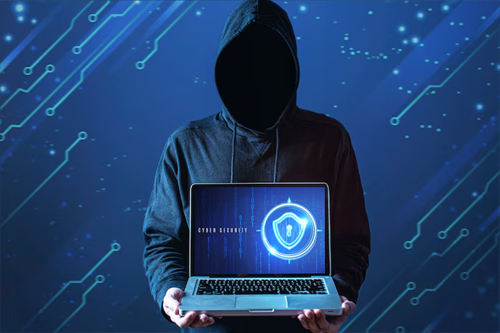What is a Leased Line Failover?
-
April 23, 2024
-
7 min read

A report on planned or unplanned downtime comes up with the following astonishing stats.
- Around 53% of organizations state that they suffered huge losses due to network downtime
- 47% of organizations surveyed noticed that they suffered a significant loss in productivity
- One of the most crucial factors stated by around 41% of organizations is the loss of brand equity or trust among customers
The stats reveal the importance of having an uptime all the time.
In a professional environment, it is important to consider the potential impact of unexpected downtime on employee productivity, operational costs, and overall revenues. When employees are working at full capacity and experience a sudden disruption, it can have adverse effects on the business.
This article will clear all the air regarding a leased line failover and how it works.
Introduction to leased line failover
The Internet serves as the lifeblood of many modern organisations. It enables critical operations and seamless communication. However, unforeseen outages can disrupt these vital functions and may lead to costly downtime. A leased line failover mechanism addresses this concern. It acts as a safety net for internet connectivity.
A leased line failover provides a secondary connection that automatically activates in the event of a primary leased line failure. This ensures uninterrupted operation and minimises the impact on business continuity. The failover mechanism can utilize either an additional broadband connection or a separate leased line. This is done depending on specific needs and budget considerations.
Importance & types of failover
The rise of cloud services, big data, and high-definition applications is demanding more from a connection. The dedicated leased line offers the speed and reliability you need to thrive.
Importance of Failover
The implementation of a leased line failover proves particularly beneficial for larger businesses. Downtime translates to significant financial losses for these organisations. This highlights the critical need for a robust and reliable internet connection.
For businesses that rely on mission-critical applications that cannot tolerate any interruptions, a leased line failover becomes a mandatory requirement. This ensures seamless operation and mitigates the potential risks associated with internet outages.
It helps in the following ways:
- Database protection: If the main server goes down, failover comes into action. It automatically switches to a backup server (on-site or in the cloud) to keep your database running without any manual intervention.
- Smooth maintenance: If there is a need to update software, failover allows for automated switchover during maintenance. This protects the system from security risks while the updates are applied.
- Flexible design: Failover can be customized to meet specific needs. A business can have multiple backup servers (local or cloud) to ensure maximum protection. It allows for repairs and updates without impacting internet leased line connection.
There are two main types of failover:
- Backup Broadband: This is like having a secondary, smaller Internet connection. It might not be as fast as the main connection. But it keeps users connected if the main connection is blocked.
- Leased Line Failover: This is like having a dedicated backup line on the main connection. It offers a more reliable and consistent connection compared to a secondary broadband option.
The best failover option for a business depends on your specific needs and budget.
Leased line failover explained: reasons for downtime
Leased lines are dedicated connections that are supposed to be constantly up. But, when there is a downtime, the connection switches to a backup. This takes time and causes a temporary slowdown. At this time, internet or data transfer might be unavailable. In short, leased line downtime happens while the connection switches to the backup line.
Leased lines boast high uptime, but even they experience occasional downtime. Leased line failover exists to bridge these gaps. Here’s why downtime can occur during a leased line connection:
- Primary Line Issues: Physical damage to the line, equipment malfunctions at the provider’s end, or even power outages can disrupt the primary connection. Leased line failover kicks in during such scenarios.
- Failover Activation Time: While automatic, switching to the backup line takes a brief moment. During this handoff, internet or data transfer might be unavailable, causing a short period of downtime.
By minimizing this downtime, leased line failover ensures your critical business operations experience minimal disruption.
How leased line failover works
Leased line failover keeps a connection alive during outages. It does so by executing the following steps:
- Monitoring Tools: Network devices constantly monitor the health of the primary leased line. These tools track metrics like signal strength and packet loss.
- Trigger Thresholds: You define acceptable performance levels for the leased line. If the monitoring tools detect issues exceeding these thresholds (e.g., excessive packet loss), a failover is triggered.
- Seamless Transition: Network equipment automatically reroutes traffic to a pre-configured backup connection (like a secondary leased line, cellular data, or a high-bandwidth internet connection). This minimizes downtime, ideally with users experiencing only a brief interruption.
While not foolproof, failover ensures a faster recovery compared to waiting for the primary line to be fixed.
Restoration of the primary connection
Restoring the primary leased line after a failover involves these steps:
- Automatic or Manual Failback: Network configurations can be set for automatic failback when the primary line recovers. Alternatively, IT staff may manually switch back after verifying stability.
- Verification and Testing: Once switched back, technicians thoroughly test the primary line to ensure it’s functioning optimally before completely disconnecting the backup connection. This includes running diagnostics and monitoring performance for a set period.
- Post-Mortem Analysis: After a failover event, a review is conducted to identify the cause of the primary line outage. This helps in preventing similar issues in the future. Proactive maintenance on the primary line can also be adjusted based on these findings.
By following these steps, businesses can ensure a smooth transition back to the primary connection with minimal disruption. And gain valuable insights to improve overall network reliability.
How to implement leased line failover
Leased line failover provides a safety net. It can be implemented by following these steps:
- Planning and Equipment: Choose a reliable backup connection. This may include a secondary internet leased line, cellular data with a high-bandwidth plan, or a dedicated internet line. Ensure the network equipment supports failover functionality.
- Configuration: Work with a robust network provider like Airtel or an IT team to configure failover settings. Define performance thresholds for the primary line (e.g., acceptable packet loss). These thresholds trigger a switch to the backup when exceeded.
- Testing: Conduct thorough testing of the failover process before relying on it. Simulate an outage on the primary line to verify the automatic switch to the backup and ensure minimal downtime for users.
- Documentation: Document the failover configuration, including trigger thresholds, backup connection details, and failback procedures. This ensures smooth transitions and simplifies troubleshooting for IT staff.
By following these steps, you can implement a robust leased line failover system that minimizes downtime and keeps your business connected during unexpected outages.
Wrapping Up
Disrupted supply or a disturbed internet connection can lead to significant financial loss to a business. Also, it causes damage to reputation and trust among users. A failover can minimize the impact of unplanned outages.
Leased Line with failover functionality provides a reliable and resilient internet connection for businesses. By constantly monitoring the primary line and automatically switching to a backup during outages, failover minimizes downtime and ensures business continuity.
Implementing failover is a proactive approach. It requires planning, configuration testing, and clear documentation. Airtel Dedicated Internet Connection is a trusted service provider. It can assist you in configuring failover for your leased line. Explore our services today and experience minimal disruption during network issues.
 Share
Share









